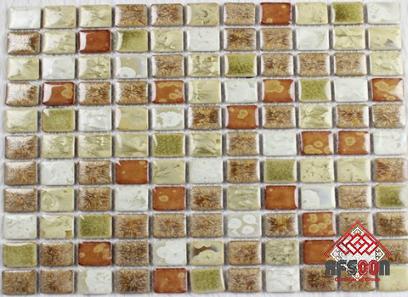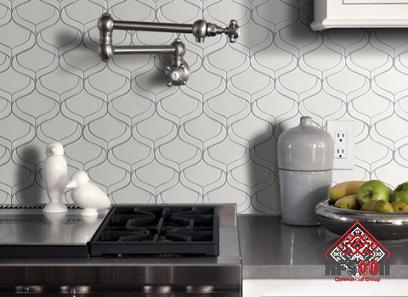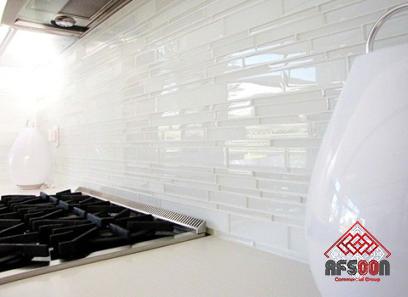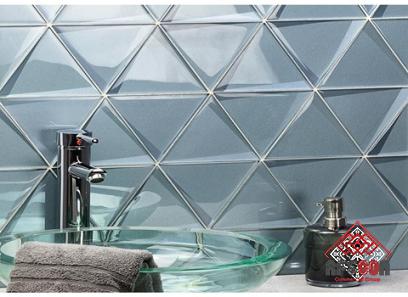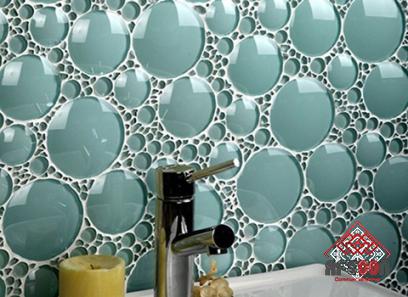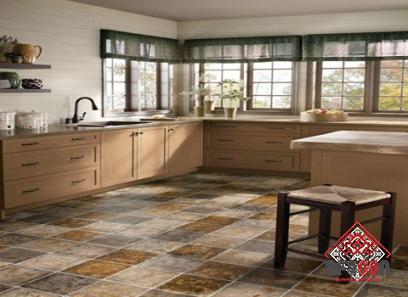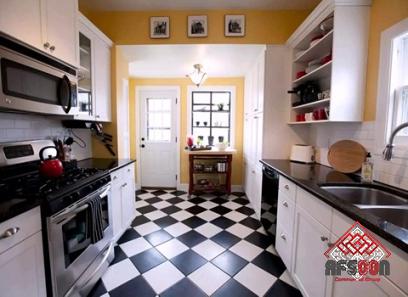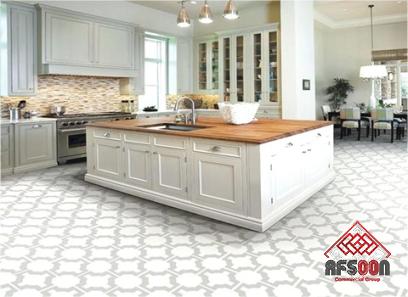kitchen island tiles floor with different beautiful patterns
A kitchen island may provide the perfect additional workspace in the middle of your kitchen
Any kind of flooring may have an island added to it, but in order to fix it to a tile floor without damaging the tile or allowing the island to move, cleats must be securely fastened to the tile
There’s a chance that some islands won’t need to be connected to the ground
To avoid sliding and tilting whenever people lean and push on smaller kitchen islands, they should be secured to the floor
A 4-inch-deep hole may be seen when you flip a typical kitchen island base cupboard upside down
Determine The Measure: The circumference of the island base or cabinet inside should be measured
Use your measurements to make a mark just on the tile floor
On the floor, install the island cabinets
Trace the foundation of the island’s perimeter or contour on the tile floor using painter’s tape
Drill Holes in The Cleats: Place wooden cleats, also known as strips of wood, on the floor within the boundaries of your measurements
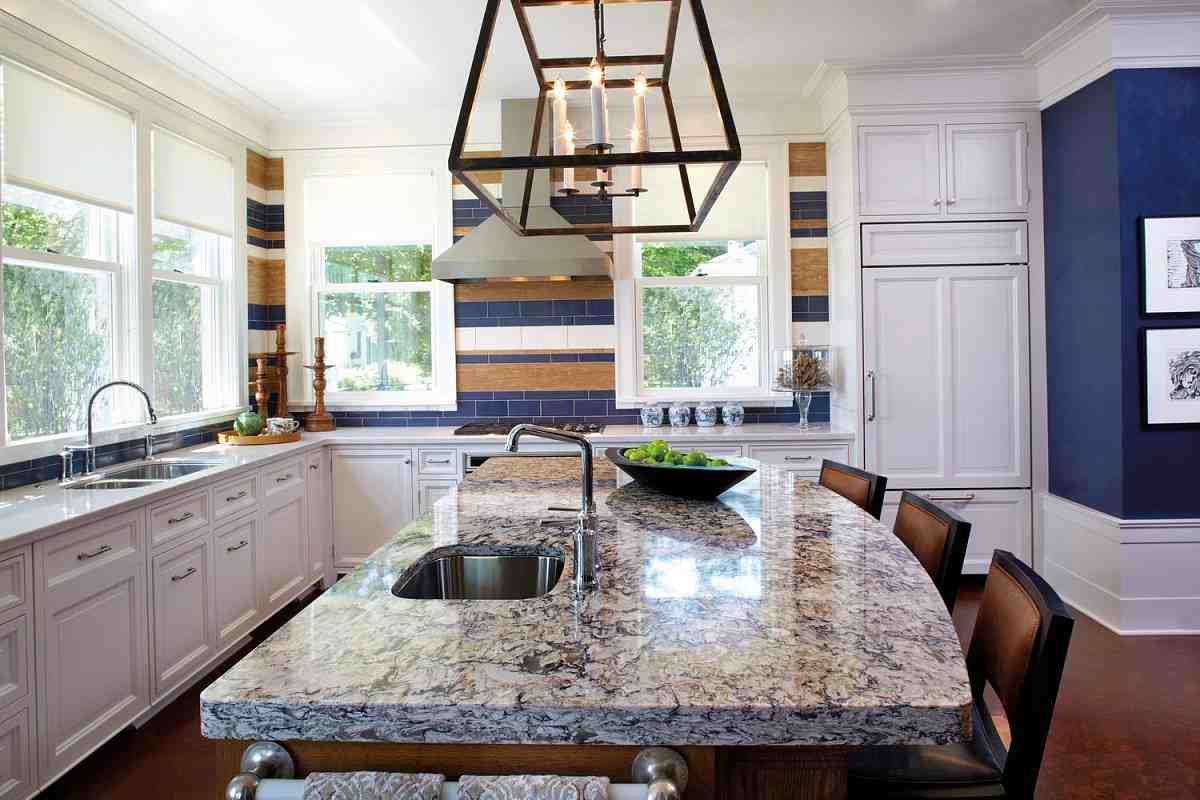
Use a wood drill bit to make pilot holes through the cleats for the screws
Draw a line where holes of the wooden cleats meet the tile
Where necessary, pre-drill holes in the tile with a masonry bit
A plastic bag should be used to plug the tile’s holes
The cleats should be secured over the holes using wood or drywall screws
Make use of construction adhesive Apply a strip of building adhesive to the outer edge of the wooden cleats before placing the cabinet base or island base around them
Before you fasten the island to the floor, draw a pencil line on the floor to get a feel of the spacing and determine if you need to relocate or adjust the edges or angles
Consider a mobile utility cart or a single cupboard with a butcher block or a fully prepared countertop if your kitchen doesn’t have enough room for an island
The movable cart wouldn’t need to be fastened to the floor, allowing you to move it about with ease if you wanted to
To avoid sliding and floor damage, the cart might be put on a rug with non-slip grippers on the underside
To stop the island from sliding or toppling over if it is tiny, anchor it to the floor
Put the wood blocks down on the ground: Place the woodblocks within the appropriate outlines on the floor, where they originally belonged
Connect a diamond drill bit to the power drill
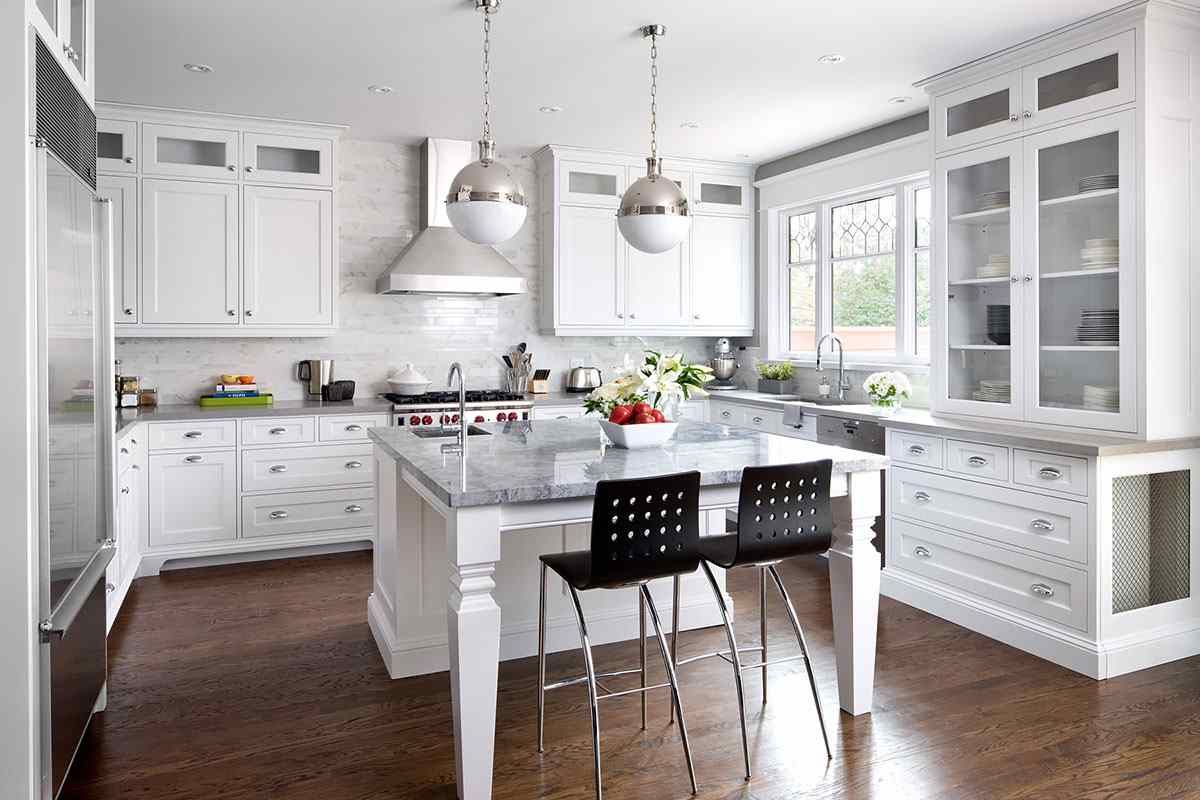
The diamond bit should have a diameter that is similar to or slightly bigger than the previous drill bit
The point of the diamond bit should be inserted into one of the woodblock’s holes
Make a hole inside the tile that is under the block
For every hole in each block of wood, you’ll repeat this procedure
There is no need to delve down
The diamond bit must only cut through the tile; it cannot shatter it
Join a Phillips head screwdriver bit to a power drill
Affix the wood screws firmly: Join a Phillips head screwdriver bit to a power drill
A woodblock should have a hole that can accommodate a 3 1/2-inch wood screw
The screw in the floor should be tightened using a power drill
There should be one screw in each hole of each woodblock
Wipe the floor’s waterproof marker lines off as well with a moist cloth
The lifting of the cabinets requires at least one helper
Complete the last stages of the island after lowering the cabinets so over woodblocks
The Additional Techniques for Securing a Kitchen Island to A Tile Floor After installation, you could have a few excess boards since it can be quite difficult to acquire precisely the perfect number of laminate flooring
The remaining boards may be used for crafts, but save a couple away in case the floor has to be fixed
Since laminate flooring boards may be colored, decoupaged, drilled, sawed, or assembled using adhesive, they are excellent craft materials
Decoupage is the technique of attaching paper cut-outs to any surface
Because laminate flooring planks have two smooth, flat sides, they are perfect for decoupaged wall art
To create your artwork, cut shapes from colored paper or printed pictures and motifs from gift wrap, crafting paper, newspapers, magazines, and old books
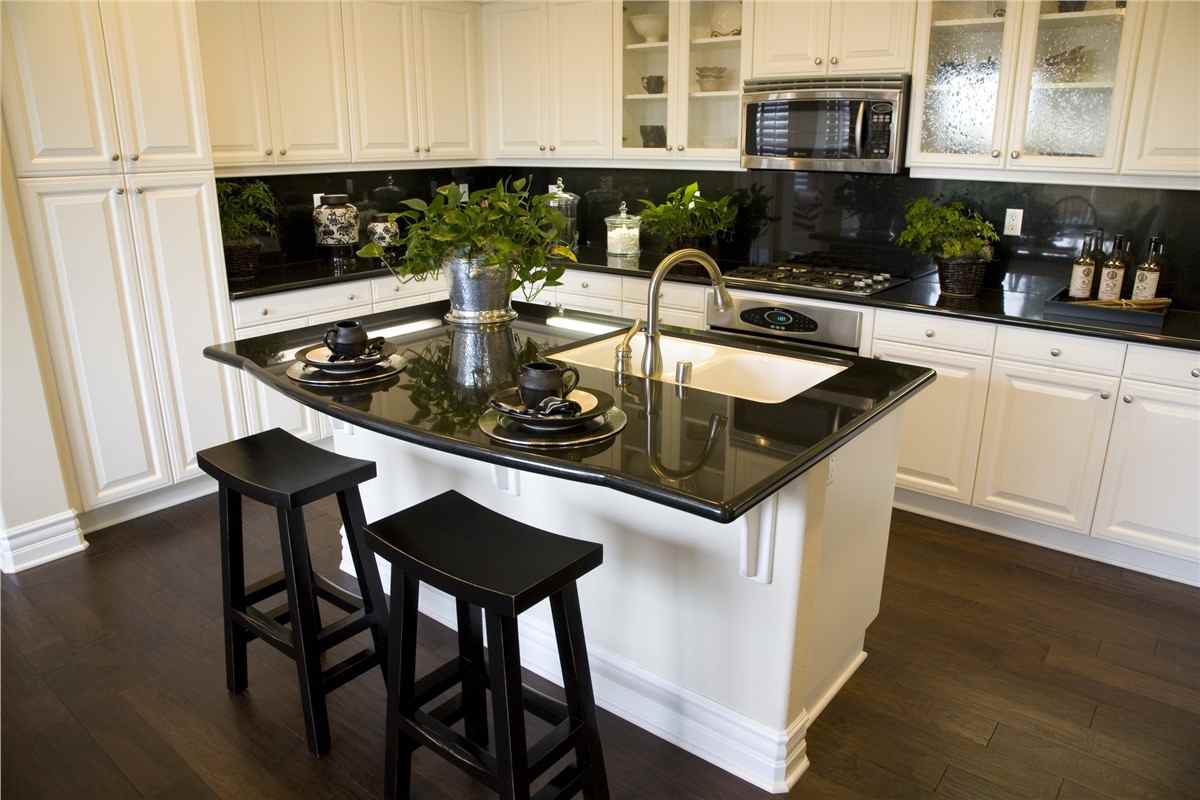
Place the paper cutouts on the laminate board as well as mark their locations before adhering
When everything is finished, paint the board with white glue, adhere to the paper cutouts smoothly, and let it dry
Add Decorative Knobs and Cork Liners: If you have the tools and hardware to cut, screw, and nail laminate flooring boards, you may build a variety of useful items throughout the home
A flooring board is embellished with a series of elaborate knobs, hooks, or pegs to create a wall-mounted hanging for coats or keys
One continuous strip of linked boards may be used to create a trivet that is the length of a table runner
Take notice that islands that are affixed to the floor are often where cooktops, sinks, or electrical outlets are situated
The fundamental building rules for an island are the same as for the majority of other cabinets, however, tiled flooring adds an additional level of intricacy
In most installations, wood blocks that fit into the base are bolted into the floor
The best ways to attach the kitchen island to the tile floor are, however, other techniques like decoupage, decorative crafts, and shelf liners
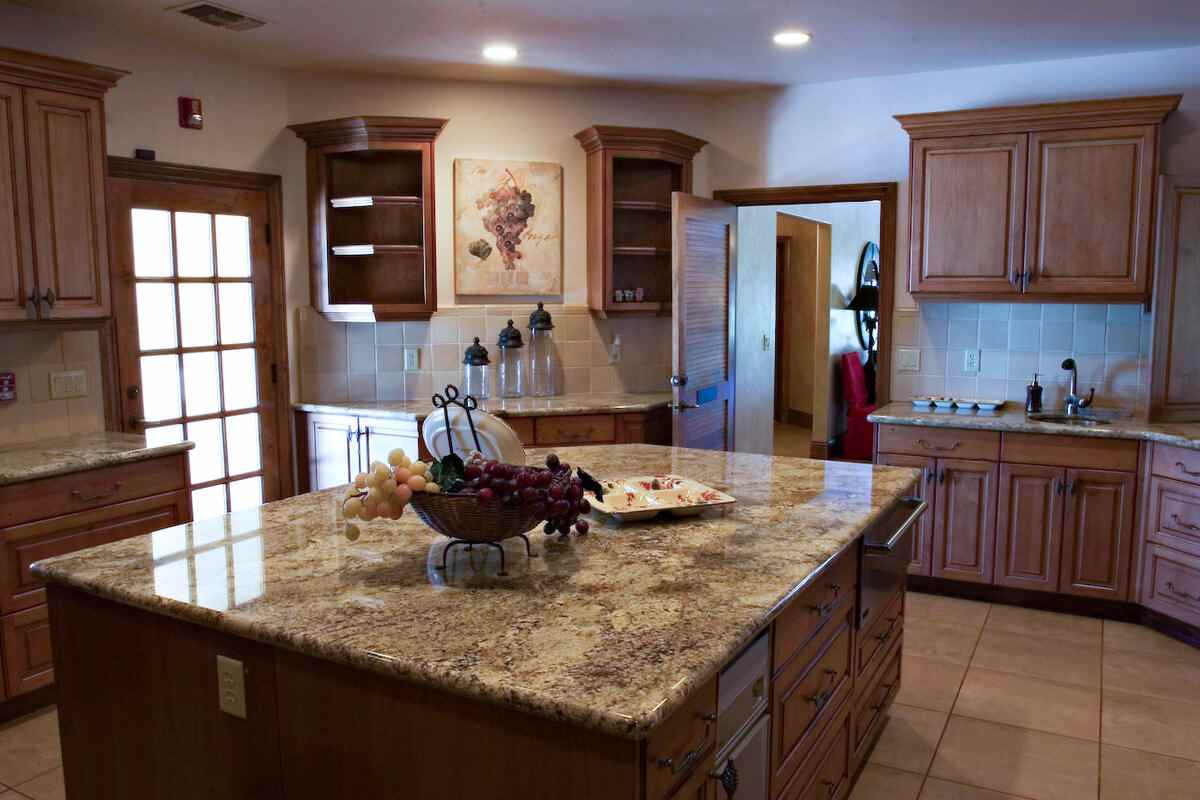
Tip; For an island, the recommended distance between cabinet doors and the island should be 36 to 42 inches if it is close to a plain wall and at least 36 inches if it is close to an appliance; 42 inches is ideal
If you don’t have enough room for an island, consider a handheld utility cart or a single cabinet that you can top with a butcher block or ready-made countertop as an alternative
You could move the portable cart with ease if you wanted to and it wouldn’t need to be fastened to the floor

